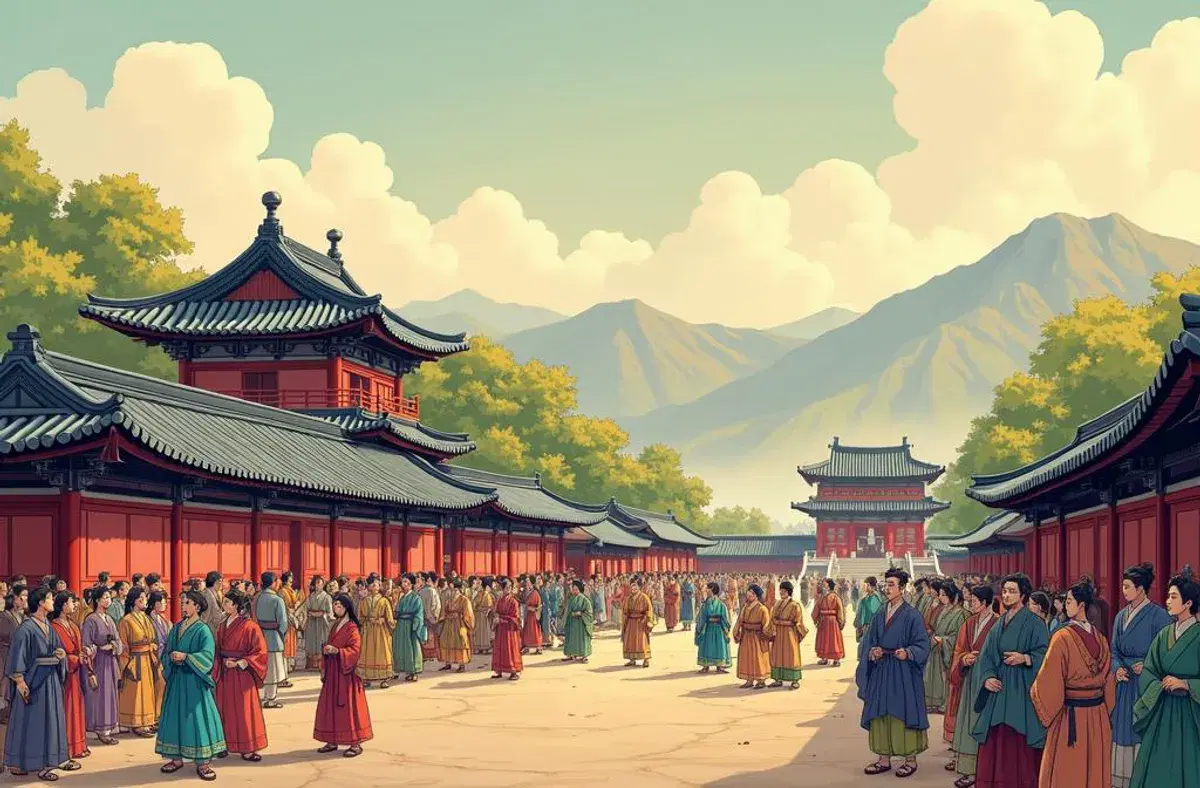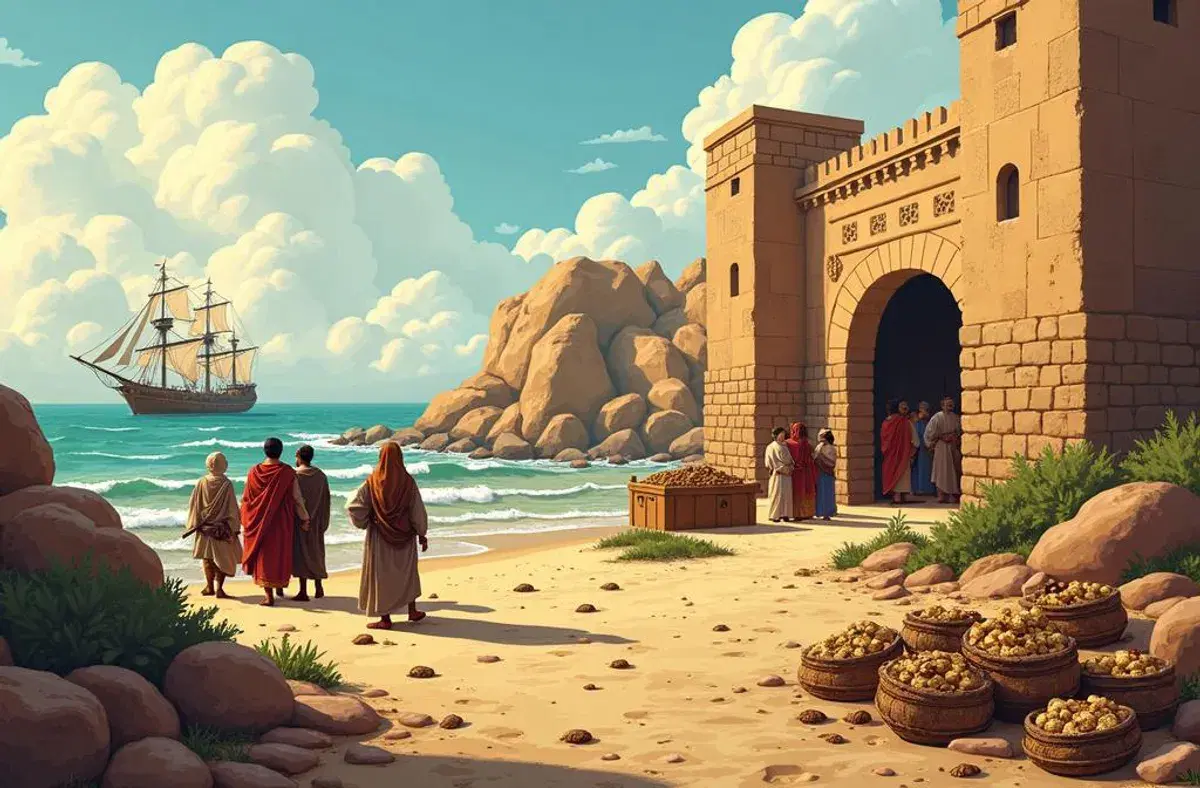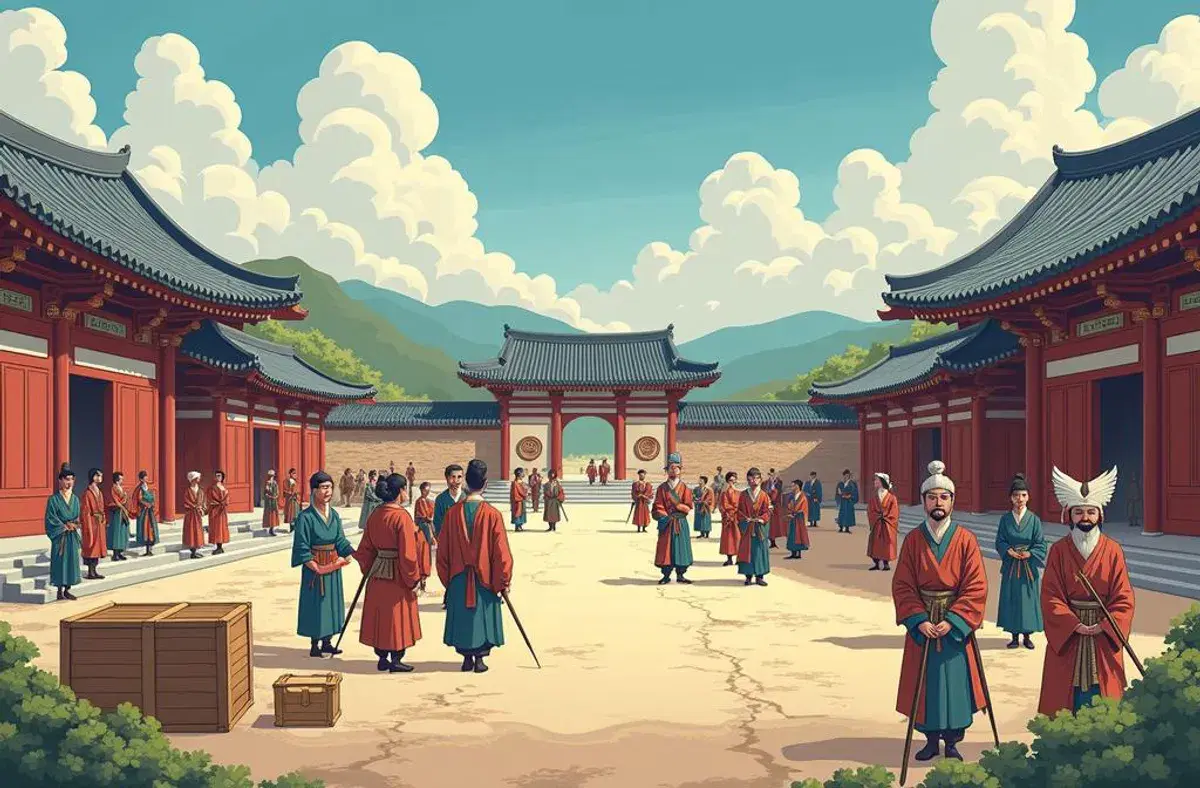History Between Korea and China: Trade, Culture, and Relationship
China and Korea have a long and connected history that goes back thousands of years. Over time, they have built a close relationship through trade, sharing ideas, and influencing each other’s cultures. This connection has shaped their identities in important ways. Their history is a mix of working together, learning from each other, and wanting to stay independent. To understand why this relationship matters, it’s important to look at how their interactions have changed over time and how they’ve affected each country’s history, traditions, and culture.

Korea and China Relations
Early Connections: Myths, Trade, and Migration
The story of Korea and China’s relationship stretches far back into ancient times. Legends tell us about a wise Chinese man named Gija (known as Jizi in Chinese) who came to Korea around 1122 BCE with thousands of followers. He is said to have taught Koreans about farming, government, and new technologies. While this story may be part myth, it reflects early exchanges of knowledge and skills between the two regions. These exchanges helped Korea develop important tools and methods for survival and growth.
Archaeologists have also uncovered evidence of trade and migration between China and Korea. Tools, coins, and pottery discovered in Korea show that people from China, Manchuria, and Siberia traveled there, bringing new farming techniques and metalworking skills. These early connections helped Korea grow into a stronger, more organized society with better technology and trade networks.
Learning From China: Writing, Religion, and Government
One of the most lasting ways China influenced Korea was through language and writing. Early Koreans adopted Chinese characters to record history, communicate with others, and write poetry. This writing system played a big role in helping Korea build a more advanced society.
China also introduced new ideas about government and religion. Koreans studied Confucianism, which taught them to value respect, order, and leadership. Confucian ideas influenced how Korean families were organized and how leaders governed their people.
Another major influence was Buddhism. While Buddhism originally came from India, it traveled through China before reaching Korea. Koreans built temples, created sculptures, and painted murals inspired by Buddhist teachings. Korean art and architecture began to reflect Chinese styles, but Koreans also added their own unique touches. Over time, these ideas blended into something new, making Korean culture both distinct and connected to its neighbor.
Trade and Cultural Exchange
Trade was one of the strongest connections between Korea and China. Goods like silk, tea, and books flowed from China into Korea, while Korea sent iron, gold, and horses in return. The Gaya Confederation, a group of small states in southern Korea, traded heavily with Han China. Archaeologists have even found Chinese coins in Gaya’s ancient sites, proving how important trade was for both regions.
Baekje, one of Korea’s kingdoms, became a center for Buddhist learning after accepting the religion in 384 CE. Baekje also adopted Chinese styles of government and ethics, which helped the kingdom grow strong and stable. Its leaders used these ideas to create schools and establish laws, showing how much China’s influence shaped the region.

Korea and China Trade Exchange
Clashes and Resistance: Standing Up for Independence
Despite its deep connections with China, Korea also resisted outside control. China’s Han dynasty once set up military colonies in northern Korea, hoping to gain power over the region. One of the largest colonies, called the Lelang Commandery, existed from 108 BCE to 313 CE. It introduced Chinese culture, trade, and administration to Korea, but Koreans often resisted Chinese rule and fought to stay independent.
Goguryeo, a powerful Korean kingdom in the north, became famous for standing up to China. In 612 CE, China’s Sui dynasty sent a massive army to conquer Goguryeo. The Koreans defeated them at the Battle of Salsu River, where only 2,700 out of 300,000 Chinese soldiers survived. This victory proved Korea’s strength and independence while still adopting ideas from Chinese culture.
Three Kingdoms Period: Growth and Change
Between the 1st century BCE and the 7th century CE, Korea was divided into three main kingdoms—Baekje, Goguryeo, and Silla—along with the Gaya Confederation. Each kingdom had its own way of interacting with China, mixing cooperation with competition.
Baekje became a hub for Confucian and Buddhist learning, building temples and schools based on Chinese ideas. Goguryeo focused on defense, constructing walls and fortresses while promoting art and literature inspired by China. Silla, the smallest kingdom, eventually united Korea with help from China’s Tang dynasty. However, Silla kept its independence, blending Chinese influences with its own traditions.
Silla’s Golden Age
After uniting Korea in 668 CE, the Silla kingdom experienced a time of growth and learning. Silla modeled its schools and government systems after China’s. Confucian and Buddhist teachings shaped daily life and leadership, helping Silla develop into a powerful and organized state.
In 682 CE, Silla opened a National Confucian Academy, and by 788 CE, it introduced exams for selecting government officials—similar to China’s practices. Trade continued to thrive, with Korea sending metals, textiles, and ginseng to China and receiving silk and luxury goods in return. Korean artists blended Chinese styles with local creativity, leaving behind stunning pagodas, sculptures, and paintings.

Silla’s Golden Age
Rise and Fall of Balhae
After the fall of Goguryeo, a new kingdom called Balhae rose in the north. Balhae traded with China, Japan, and other nearby regions, becoming an important cultural and economic center. However, Balhae often faced conflicts with China and Silla. Eventually, Balhae was conquered by the Khitan tribes in the 10th century CE, marking the end of its influence.
Lasting Impact
The long history between Korea and China is a story of friendship, trade, learning, and even conflict. While Korea borrowed ideas about government, art, and religion from China, it also stayed independent and created its own traditions. Over time, Korea developed a unique identity shaped by both Chinese influences and its own creativity.
Today, many aspects of Korean culture, such as Confucian values and Buddhist practices, still show traces of this ancient relationship. The history of Korea and China reminds us how cultures can exchange ideas and grow stronger without losing their individuality.





